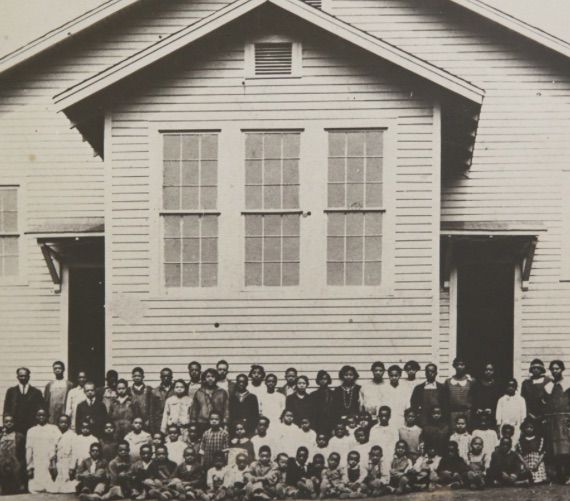


An educated workforce is one key element to individual and community economic success, and quality education enhances the livability of cities for all its citizens. Many cities that have developed and maintained economic strength in recent years have elevated the conversation regarding education and research outcomes. In Charleston, the civic government and larger community stands apart from the governance of the school systems, but everyone has a very real stake in student success.
The recent forums and debates in Charleston have underscored the issue of improving educational opportunities as critical to the future of the city and region. When the Charleston Digital Corridor hosted a forum for the mayoral candidates earlier in September, among the issues raised to the candidates, was the ongoing need for workforce development to meet the growing demands in the technology sector. The rise of the technology sector and the addition of Boeing and Volvo to the region’s manufacturing sector have increased the community’s expectations from both the secondary and post-secondary educational institutions.
The post-secondary response has been swift with area leaders and academics sensing the opportunities. The College of Charleston has added the I-CAT (International Cross-Curricular Accelerator for Technology) to weave business, computer science, and liberal arts skills together. Trident Technical College (here) has beefed up its offerings to include more skills needed in engineering and technology, and vendors like The Iron Yard (here) are also bringing focused technology training to the region. The Medical University’s research has expanded its focus deeper into biotechnology and bioengineering with such collaborative partnerships as Clemson University (here). Response within the public elementary and secondary school system has been relatively uneven, with larger schools introducing focused programs in most or all of the STEM subject areas of science, technology, engineering, and mathematics. Other schools have partnered with area businesses to incorporate some smaller programs with technology, entrepreneurship, or other specific skill training components.
Systemic inequity can plague a region, especially in the public pre-school, elementary, and secondary school education system. Wealthier areas tend to have better representation on the school board, better teachers and administrators, and more parental involvement. Other schools are vexed with issues that stem from inconsistency in teacher quality, programs, or administration, lack of parental engagement, and inadequate facilities. Funding mechanisms and tax structures often exacerbate the issue with some districts resorting to closing or consolidating schools, often laying the blame on every imaginable culprit, except the inadequacy of the public funding model, for the situation. If the school curriculum is dictated by state level politics, or if the local school board has uneven representation or divisive objectives of governance, what measures can local government take to support, advocate, and cultivate better educational opportunities and workforce development?
Cities have opportunities to cultivate a better climate for student outcomes. Providence, Rhode Island, recently received a $5,000,000 grant from Bloomberg Philanthropies for a pre-school program (here) to promote school readiness that uses proven technology to deliver coaching and tools to parents to close the word gap – low-income students hear 30 million fewer words before kindergarten than their peers from middle- and high-income families – and address major education issues before kids ever get to school.
Cities can also provide resources to schools to help lower high school drop out rates. At the University of Chicago, more than a decade ago, a team of researchers “…discovered that passing the ninth grade—earning at least five credits and no more than one semester “F” in a core class—is a better predictor that a student will graduate than are his or her previous test scores, family income, or race (The Atlantic published an article on this effort – available here). A student who passes ninth grade is almost four times more likely to graduate than one who doesn’t….” Using a series of interventions, schools have improved freshman pass rates. Among these interventions are areas where cities can cooperatively work with the schools. Public/private partnerships can step up with mentorship and tutoring opportunities within the community. Local government can cooperate with schools to monitor truancy. The results in Chicago have reduced high school dropout rates by double digits by moving from a sink-or-swim model to one “built on second chances.”
Charleston, South Carolina, has significant issues related to school inequality and a number of programs have emerged in recent years to develop strategies that can help. The Quality Education Project (you can visit their Facebook page here) brings together many community and academic leaders to strategize for ways that can improve the educational environment and student outcomes. Charleston Promise Neighborhood and Communities in Schools are involved in these efforts as well. The non-profit Meeting Street Schools worked closely with the school district in 2013 to launch a public school initiative at Brentwood that has seen remarkable results in only its first year (here). Some businesses have taken the initiative to launch student-run efforts that mimic real life conditions such as the student-run Heritage Trust Federal Credit Union at Goose Creek High School (here). The Lowcountry Maritime Society is using boat building to teach math and local history to students at Sanders Clyde and Burke (here).
Ultimately, everyone in a community has a stake in better schools, and the responsibility to ensure the success of these efforts requires a commitment on the part of parents, teachers, business leaders, workers, children, and retirees. Schools should have the resources, both financial and otherwise, for the next generation of graduates to make education a hallmark of our city’s success.